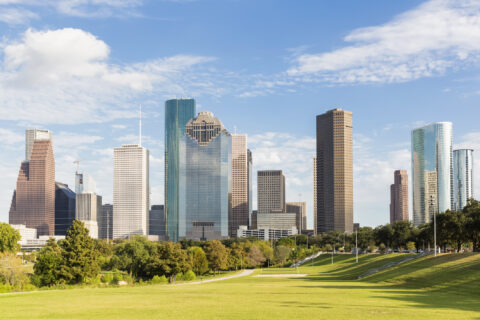On Thursday, June 17, the U.S. Department of Treasury released updated FAQ resources on the broadband eligible use category for American Rescue Plan’s Local Fiscal Recovery Fund. NLC and other local government advocates raised concerns upon the release of Treasury’s Interim Final Rule for the fund that the structure of the broadband eligible use category was too restrictive and would result in many communities in need of broadband infrastructure electing not to use ARPA funds for that purpose.
The updated FAQ document addresses many of those concerns, and represents a major advocacy win for cities hoping to invest in broadband infrastructure. NLC believes additional changes to the text of the final rule are still needed to fully address local concerns and strongly encourages interested communities to file comments by July 16, 2021. More information about how to do that is at the end of this post.
In response to the initial release of the Interim Final Rule, NLC raised the following concerns:
- The restriction of “unserved or underserved” to locations without reliable wireline 25/3 Mbps service does not address the modern bandwidth needs experienced by many households during the pandemic, leaving areas with broadband incapable of supporting normal activities like video meetings or constant VPN connections required by employers for remote workers;
- The Interim Final Rule’s eligible area determination did not address the major barrier of service affordability;
- Many communities, based on FCC data, would appear to be 100% covered by 25/3 Mbps service, despite on-the-ground experience showing that not to be true; and
- Many communities hoping to build new broadband infrastructure would need to cross through areas with existing service, either as a middle-mile build or as part of the work necessary to make a project pencil out, due to decades of selective building and digital redlining by existing providers.
What Does the Treasury Update on Broadband Do for Cities?
The clarifications provided by Treasury substantially address the latter two concerns raised by NLC and local governments. Cities are notrequired to provide service solely to unserved or underserved households or businesses, as long as those locations are prioritized, and the project’s objective is to provide service to unserved or underserved households and businesses. Other locations may be served as part of that overall project. Treasury also notes that “middle mile” projects are eligible uses of funding, but that communities are encouraged to focus on projects that will achieve last-mile connections to users either by funding those last-mile projects or ensuring that middle-mile projects have potential or partnered networks to achieve last-mile service.
The updated FAQ also clarifies the term “reliably,” when determining if locations “reliably” receive 25/3 Mbps wireline service, or if projects “reliably” provide 100/100 Mbps or 100/20 Mbps service. Treasury clarifies that cities have substantial discretion to determine this reliability, and notes that provider claims of service for a given household or business location (such as through provider advertisements or Census block-level FCC data) are not dispositive. Treasury provides a number of potential data sources that cities may choose to use, as well as factors communities may consider when determining reliability, and notes that cities are not limited to that list of options.
Previous updates to the FAQ also note that related activities beyond traditional broadband infrastructure, including digital literacy training and programs to promote Internet access, are eligible under the broadband use category. Cybersecurity activities, “including hardware, software, and protection of critical infrastructure,” are eligible uses under the provision of government services use category.
What Changes are Still Needed?
The Treasury FAQ does not address changes to the 25/3 Mbps speed threshold when determining if a location is unserved or underserved, nor does it address affordability concerns in that determination. If a community determines that it has no locations that lack reliable wireline 25/3 Mbps service, even if that service is unaffordable or inadequate for residents’ and businesses’ needs, under the current guidelines and regulations, they would be unable to use the Local Fiscal Recovery Fund money for building new broadband infrastructure, although they could elect to use it for affordability programs or supports. For Treasury to take action on either of those items, a formal change in the text of the final rule would be required, and the agency would decide to do that in response to written comments filed as part of the public record. NLC plans to file comments and strongly encourages communities interested in this issue to file their own comments.
If your community would like to file written comments, you may do so via the regulations.gov portal. If you need assistance in drafting your city’s comments, NLC has prepared a template comment letter to guide you as you develop a comment letter. Comments must be submitted by July 16, 2021 to be included in the record. For questions about the Treasury Submission Portal or for technical support, states and localities can e-mail covidreliefitsupport@treasury.gov. For general questions about the program, states and localities can e-mail SLFRP@treasury.gov.









